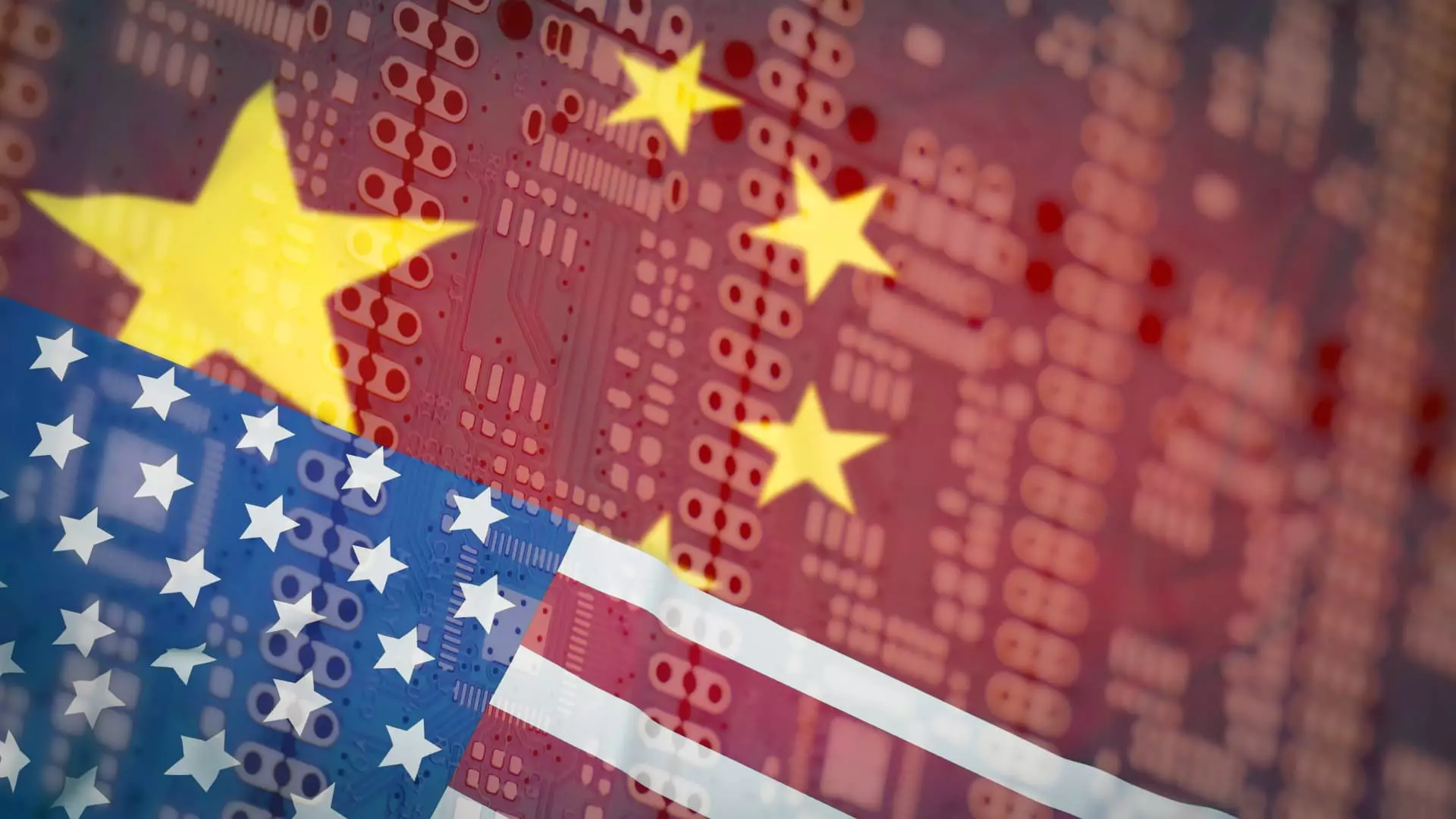As a major player on the global stage, China’s tech industry is responding dynamically to new challenges posed by U.S. export controls on semiconductors. With giants like Tencent and Baidu at the forefront, there’s a captivating narrative unfolding—one of resilience, resourcefulness, and reinvention. The ongoing tussle between China and the U.S. over high-tech supremacy doesn’t only signify corporate competition; it could ultimately shape the technological landscape of the future. While the perception may lag behind reality, it is crucial to recognize the innovative tactics these firms are employing to circumvent barriers and thrive amid constraints.
Stockpiling as a Defensive Strategy
A compelling strategy emerging from the boardrooms of Tencent and Baidu is the stockpiling of semiconductors, particularly GPUs, which are essential in powering advanced AI models. Martin Lau, president of Tencent, openly acknowledges the significance of their “pretty strong stockpile” of chips, asserting that their preemptive purchases have ensured they remain operationally viable despite the tightening international trade environment. This stockpiling is not merely about amassing resources; it’s about crafting a sustained competitive advantage in an AI landscape increasingly dependent on raw computational power. By minimizing reliance on new chip availability, Tencent and Baidu are not only weathering the storm but actually capitalizing on existing strengths, forging a pathway to continued innovation that goes beyond mere chip acquisition.
Efficiency: The New Competitive Edge
One of the most striking facets of both companies’ responses is their emphasis on efficiency and optimization in AI training and deployment. Lau’s statement regarding Tencent’s ability to achieve satisfactory training results with a limited number of GPUs reflects a significant paradigm shift in how companies perceive resource allocation. Rather than succumbing to the conventional mindset that larger hardware pools equal superior AI performance, Tencent is setting a precedent for efficiency-driven development. The focus on software optimization, coupled with the exploration of smaller and less resource-intensive AI models, signifies a crucial pivot in the strategy of Chinese tech firms that challenges traditional Western notions of AI training.
Pioneering Custom Solutions
The emphasis on homegrown semiconductors cannot be overstated in this evolving narrative. Baidu’s assertion of its “full-stack AI capabilities” not only showcases its technological arsenal but reflects a proactive approach to self-sufficiency. The fact that domestic firms are now capable of creating their own chips presents a watershed moment for China—a move that solidifies its foothold in the AI sector and aligns with national interests toward technological autonomy. Dou Shen’s comments underline the importance of blending homegrown technology with optimized software, ensuring that Chinese enterprises can grow confidently without total dependence on foreign suppliers. The innovation witnessed in AI applications is a testament to this burgeoning independence, empowering these companies to create tailored solutions that fit their unique operational contexts.
The Overlooked Potential of Domestic Tech
Critics often emphasize China’s lagging position in advanced AI semiconductors compared to the United States. While it is true that there remains a gap, this viewpoint overlooks the remarkable progress being made within the domestic technology ecosystem. Analysts like Gaurav Gupta underscore the emergence of a self-sufficient semiconductor manufacturing pipeline, with a steady commitment to developing materials, equipment, and chips in-house. This evolving dynamic challenges the traditional narratives surrounding U.S. superiority, revealing a persistent and united front among Chinese tech firms that is both ambitious and strategic.
Challenging the Narrative: U.S. Perspectives
Interestingly, the dialogue around export restrictions features a growing chorus of voices within the U.S. tech community critiquing these policies as counterproductive. Recent statements from notable figures like Nvidia’s CEO highlight concerns that such restrictions may have unintended consequences, harming American businesses more than their Chinese counterparts. This introduces an intriguing irony—while the U.S. aims to stifle competition, its actions may inadvertently be nurturing a more robust and competitive Chinese tech landscape. This evolving scenario underscores the necessity for nuanced discourse, wherein the implications of policies extend beyond simplistic binaries of competition and security.
Through bold strategies and a commitment to reshaping operational paradigms, Tencent and Baidu are demonstrating that resilience is the hallmark of innovation. They represent a formidable force in the AI race, deftly navigating trade restrictions while redefining what competitiveness means in a rapidly changing technological landscape.

